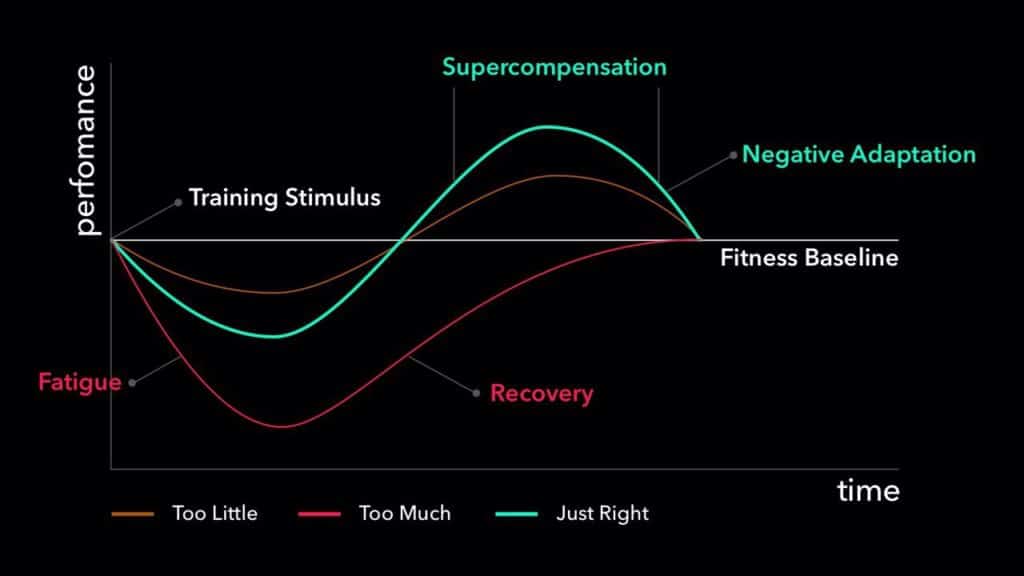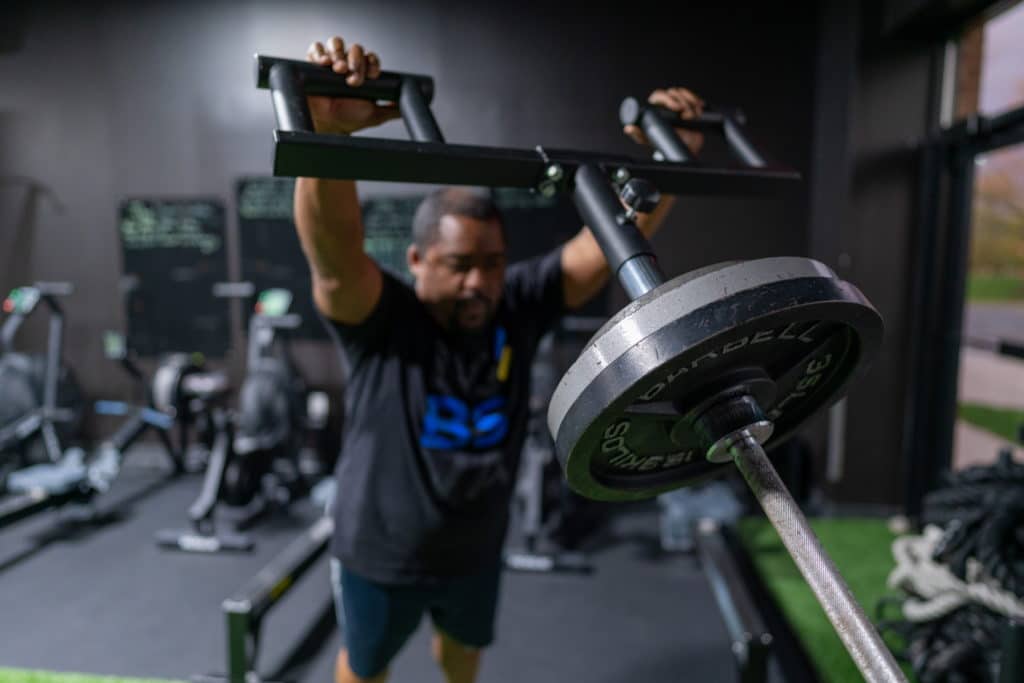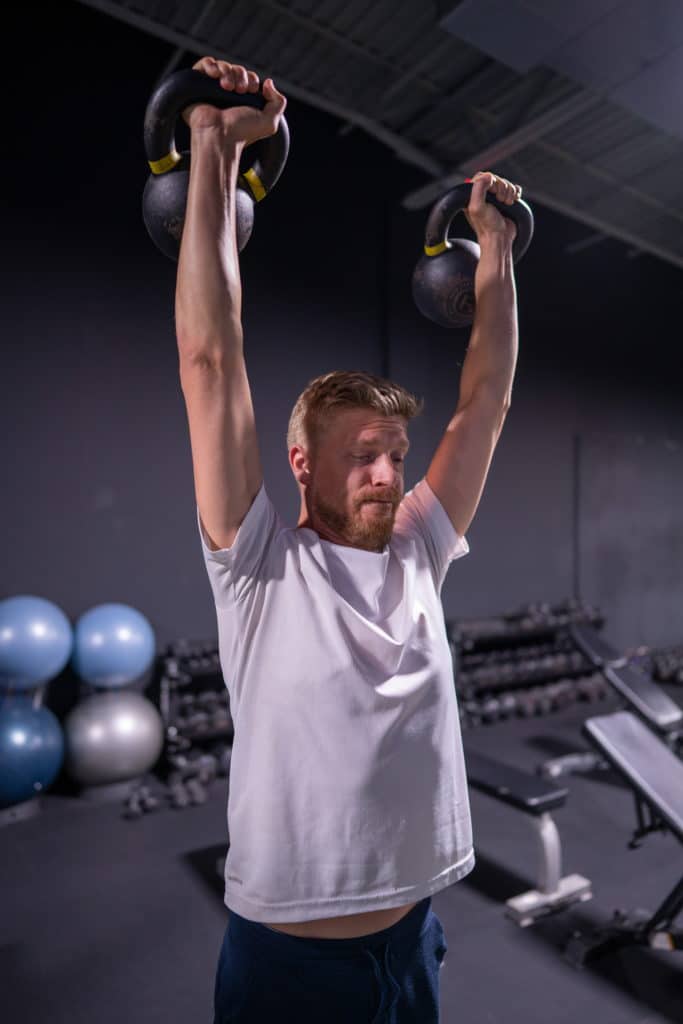It doesn’t take a degree in advanced rocket surgery to understand that a person builds strength by lifting progressively heavier weights. But progressing your weights throughout a training program requires thought, planning, and understanding how the body adapts to training.
Rather than just slapping more weight on the bar each week, there is a smarter way to progress your weights during a strength training program. This article will teach you how. Let’s start with understanding a little bit about how the body adapts to training stress.
Supercompensation
Before we talk about weights, you must understand supercompensation. RPE will make a heck of a lot more sense.
Supercompensation states that when subjected to proper loading and recovery time, the body adapts to the stress and performs beyond its previous ability. That means you get stronger.
But you have to pay attention to the fine print: proper load and proper recovery time.
If you give your body too much stress, i.e. too much weight, it won’t recover and super compensate. You won’t have any resources left in the tank for your body to use for recovery.
On the flip side, if you don’t use enough weight you won’t stress your body enough for it to feel the need to recover and adapt.

So, we use appropriate weights, based on Rating of Perceived Exertion (RPE) to stress your body the right amount. Then supercompensation takes over–provided that you’re eating, sleeping, and drinking water like an adult.
The neat thing about supercompensation is that it’s a survival mechanism. That means it helps you adapt beyond the demands you’ve placed on your body. This happens so the stressor doesn’t take as many resources from your body the next time you encounter it.
The practical meaning is that you don’t need to use as much weight as you might think you need to get stronger.
Let’s break it down by RPE.
RPE and Beyond Strength Training Programs
Rating of perceived exertion is putting a number on how much effort is required to do something. We use RPE instead of percentages of one-rep max because it offers more flexibility. Your ability to expend energy changes from day to day for a variety of reasons. RPE accounts for that by allowing you to decide how hard something feels on that given day.
Our strength training prescriptions range between @7 and @9 RPE.
@7 = 4 to 5 reps left in the tank at the end of a set.
@8 = 2 to 3 reps left in the tank at the end of a set.
@9 = 1 rep left in the tank at the end of the set.
These descriptions are accompanied by the rule that all reps must be done with good form. If you had one rep left in the tank but it looked as if your spine might shoot out of your butthole when you finished the set, you are beyond an @9 RPE. The same goes for @8 and @7.
RPE progresses by week in Beyond Strength programs.
Week 1 strength work is typically done at an @7-@8 RPE. The same goes for Week 2. Week 3 is typically an @8 RPE, and Week 4 returns to @7-@8.
Keep in mind that RPE often changes from set to set. Many times RPE lowers on set 2 compared to set 1 because your nervous system is more “awake.” But the opposite happens as well. The best practice is to keep checking in on your RPE from set to set.
Now let’s talk about progressing your weights from week to week within the RPE prescription.
RPE from Week to Week
Week 1 weights should typically feel easy. That means a conservative @7 with a definite 5 reps left in the tank at the end of the set. This is important for a couple of reasons. First, you don’t want to put yourself behind the recovery curve by going too heavy too soon. It could mess you up for the rest of that training week, if not for the entire program. Second, you’ll be adjusting to new exercises and new stressors. Your body needs resources to adapt to the changes. Staying conservative with your weights gives your body an adaptation buffer.
During Week 2, you’ll settle into the program. You have experience with the new exercises or the new way in which exercises are loaded. That means you’ll apply more intensity to your training. Go ahead and find an @8 if you have the moxie. If not, hang back in @7 land. Here’s another thing to consider. Your @7 from the previous Week 2 is likely lighter than your @7 during Week 2. You could effectively stay at an @7 RPE and still go up in weight. Neat, right? Or you could leave only 4 reps in the tank instead of 5. The world is your oyster.

Week 3 is about pushing strength. It’s best that you at least touch an @8 RPE that week. You don’t have to do all of your sets @8, but you need to get there. However, if you feel like 10 pounds of shit stuffed in a 5-pound bag, don’t be silly. Keep the weight low. That goes for all weeks, but I wanted to note it while we discussed jacking up intensity.
Now, Week 4 is a bit of a wildcard. The strength training volume (amount of sets) is usually the highest of all the weeks. It’s typically the right call to back down to a conservative @7 with the volume hike. But if you’re feeling froggy, you could touch @8 for a set or two. Doing every set @8, however, would likely put you into the trashcan and unable to recover by the start of the next training week.
Let’s outline these thoughts with weight selection progressions from week to week.
Weight Selection Progressions from Week to Week
I’ll walk you through a great progression for selecting weights within workouts and between workouts. In most instances, it’s best to follow a wave that goes up and comes back down. But you can also just ride the wave up and stay there. Let’s look at some examples.
Week 1
Set 1: @7 RPE with 5 reps left in the tank
Set 2: @7 RPE with 5 reps left in the tank
Set 3: @7 RPE with 5 reps left in the tank
Set 4: @7 RPE with 5 reps left in the tank
Week 2
Set 1: @7 RPE with 5 reps left in the tank
Set 2: @7 RPE with 4 reps left in the tank
Set 3: @8 RPE with 3 reps left in the tank
Set 4: @7 RPE with 4 reps left in the tank
Week 3
Set 1: @8 RPE with 3 reps left in the tank
Set 2: @8 RPE with 2 reps left in the tank
Set 3: @7 RPE with 4 reps left in the tank
Week 4
Set 1: @7 RPE with 5 reps left in the tank
Set 2: @7 RPE with 4 reps left in the tank
Set 3: @8 RPE with 3 reps left in the tank
Set 4: @7 RPE with 4 reps left in the tank
Set 5: @7 RPE with 5 reps left in the tank
This progression would have you do 4 heavy, @8 sets during the program and a lot of moderately heavy @7 sets. It’s definitely enough stress to elicit supercompensation. Now, this progression isn’t the end-all-be-all, but it’s a great format–one that you could use for the foreseeable future and continue to make gains.

You could work in heavier sets throughout the month. And sometimes we stay at higher RPEs for longer periods, depending on the training phase. But you could take this progression to the bank for the rest of your training career and do well.
Remember, supercompensation only requires enough stress to elicit the need to recover. You don’t have to pound yourself with weight to make it happen. And three or four truly heavy sets throughout a one-month training phase are plenty.
Use this progression to select your weights during your strength training days…unless otherwise coached by us to do something different. 🙂
